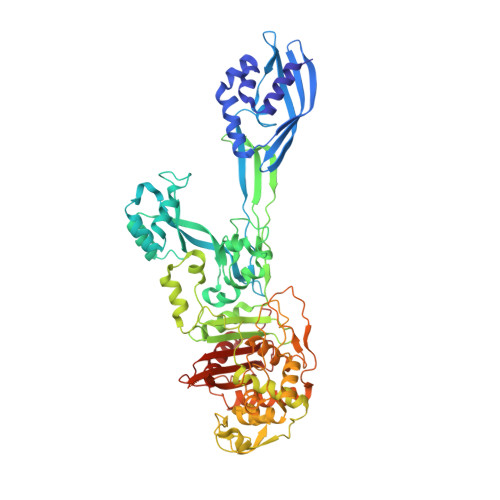Disruption of Allosteric Response as an Unprecedented Mechanism of Resistance to Antibiotics.
Fishovitz, J., Rojas-Altuve, A., Otero, L.H., Dawley, M., Carrasco-Lopez, C., Chang, M., Hermoso, J.A., Mobashery, S.(2014) J Am Chem Soc 136: 9814
- PubMed: 24955778
- DOI: https://doi.org/10.1021/ja5030657
- Primary Citation of Related Structures:
4BL2, 4BL3, 4CPK - PubMed Abstract:
Ceftaroline, a recently approved β-lactam antibiotic for treatment of infections by methicillin-resistant Staphylococcus aureus (MRSA), is able to inhibit penicillin-binding protein 2a (PBP2a) by triggering an allosteric conformational change that leads to the opening of the active site. The opened active site is now vulnerable to inhibition by a second molecule of ceftaroline, an event that impairs cell-wall biosynthesis and leads to bacterial death. The triggering of the allosteric effect takes place by binding of the first antibiotic molecule 60 Å away from the active site of PBP2a within the core of the allosteric site. We document, by kinetic studies and by determination of three X-ray structures of the mutant variants of PBP2a that result in resistance to ceftaroline, that the effect of these clinical mutants is the disruption of the allosteric trigger in this important protein in MRSA. This is an unprecedented mechanism for antibiotic resistance.
Organizational Affiliation:
Department of Chemistry and Biochemistry, University of Notre Dame , Nieuwland Science Hall, Notre Dame, Indiana 46556, United States.
















